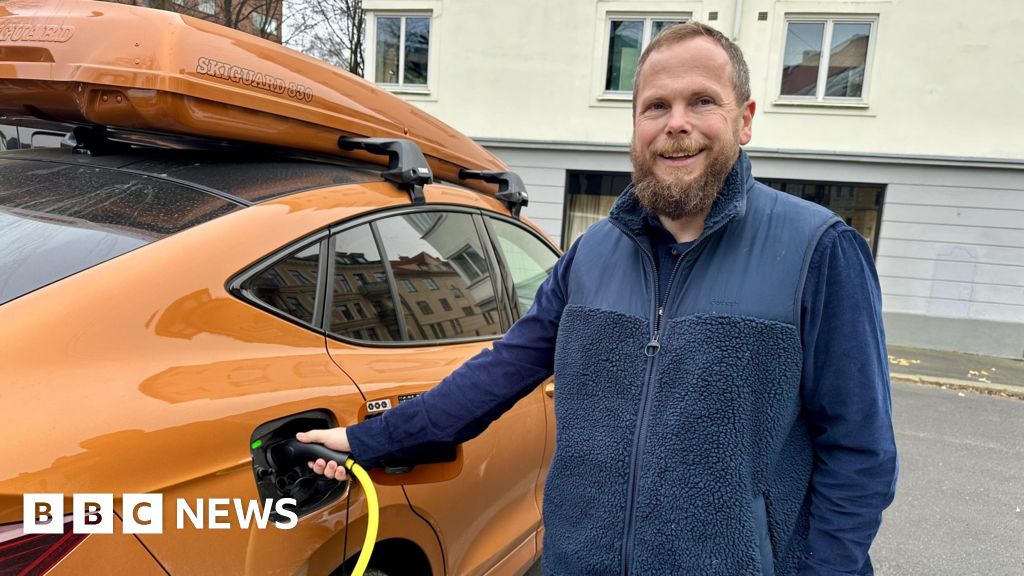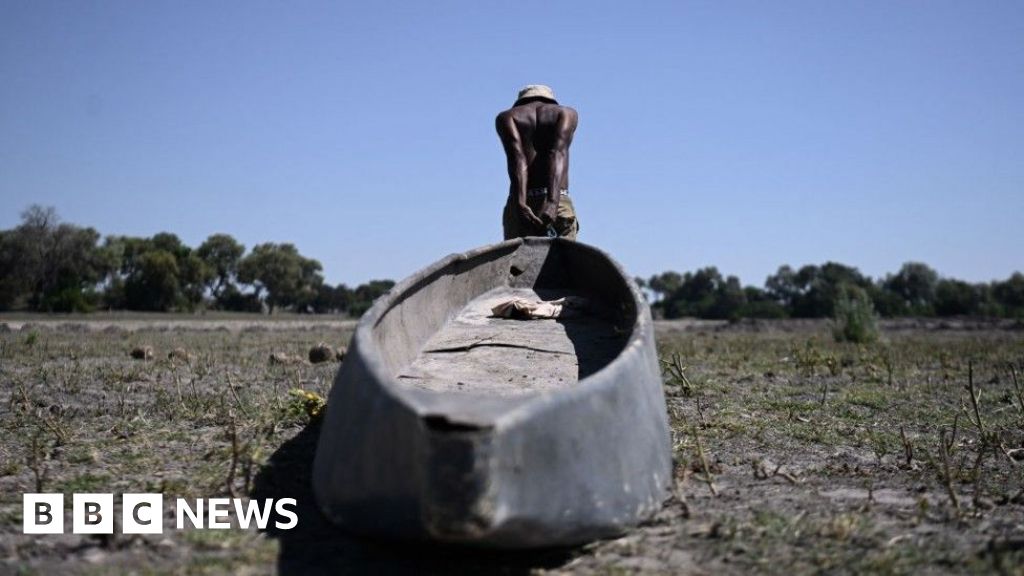ARTICLE AD BOX
By Paul Rincon
Science editor, BBC News website
image source, Bournemouth University
image captionThe footprints belonged to teenagers and children who lived between 23,000 and 21,000 years agoHumans reached the Americas at least 7,000 years earlier than previously thought, according to new findings.
The topic of when the continent was first settled from Asia has been controversial for decades.
Many researchers are sceptical of evidence for humans in the North American interior much earlier than 16,000 years ago.
Now, a team working in New Mexico has found scores of human footprints dated to between 23,000 and 21,000 years old.
The discovery could transform views about when the continent was settled. It suggests there could have been great migrations that we know nothing about. And it raises the possibility that these earlier populations could have gone extinct.
The footprints were formed in soft mud on the margins of a shallow lake which now forms part of Alkali Flat in White Sands.
A team from the US Geological Survey carried out radiocarbon dating on seeds found in sediment layers above and below where the footprints were found. This gave the researchers remarkably precise dates for the impressions themselves.
Based on their sizes, scientists think the tracks were made mainly by teenagers and younger children travelling back and forth - along with the occasional adult.
They offer a fascinating window into what life was like for these early occupants of what is now the South West US.
The scientists don't know for sure what the teenagers were doing, but it is possible they were helping the adults with a type of hunting custom seen in later Native American cultures. This was known as the buffalo jump and involved driving animals over a shallow cliff edge.
The animals "all had to be processed in a short period of time," explained Dr Sally Reynolds, co-author from Bournemouth University. "You'd have to start fires, you'd have to start rendering the fat." The teenagers could have been helping out by collecting firewood, water or other essentials.
image source, Bournemouth University
image captionResearchers dated seeds found above and below the layers containing the footprintsThe age of the discovery is key, because there have been countless claims of early human settlement in the Americas. But virtually all are disputed in some way.
It often comes down to a debate over whether stone tools found at an ancient site are in fact what they appear to be, or are simply rocks broken through some natural process - such as falling from a cliff.
The proposed artefacts at early locales are sometimes less clear-cut than the exquisitely crafted spear-points found in North America from 13,000 years ago onwards. This leaves the door open for doubt about their identity.
"One of the reasons there is so much debate is that there is a real lack of very firm, unequivocal data points. That's what we think we probably have," Prof Matthew Bennett, first author on the paper from Bournemouth University, told BBC News.
"Footprints aren't like stone tools. A footprint is a footprint, and it can't move up and down [in the soil layers]."
While the nature of the physical evidence here is harder to dismiss, the researchers had to ensure the dating evidence was - quite literally - watertight.
A potential complication flagged up by the journal during the early stages of review was the "reservoir effect". This refers to the way that old carbon can sometimes get recycled in aqueous environments, interfering with radiocarbon results by making a site seem older than it is.
However, the team members say they have accounted for this effect and believe it is not significant here.
image source, Getty Images
image captionA stone point made by the Clovis people. They were once believed to be the first AmericansProf Tom Higham, director of the Oxford Radiocarbon Accelerator Unit, said: "They've undertaken some checks on the dates of material from near to the footprint location and found that fully terrestrial samples (charcoal) produced ages similar to those of the aquatic species they dated from nearer to the footprints.
"They've also argued, I think justifiably, that the lake must have been shallow at the time people walked there, mitigating the effect of reservoir effects introduced by old carbon sources." The consistency of the results and the support from a different dating technique applied to the site both supported the validity of the results, he added.
"I think taken together this is a 21,000-23,000-year-old sequence," Prof Higham told BBC News.
The controversies in early American archaeology have much to do with the historical development of the field.
During the second half of the 20th Century, a consensus emerged among North American archaeologists that people belonging to the Clovis culture had been the first to reach the Americas.
These big game hunters were thought to have crossed a land bridge across the Bering Straits that connected Siberia with Alaska during the last ice age, when sea levels were much lower.
As the "Clovis First" idea took hold, reports of more ancient settlement were dismissed as unreliable and some archaeologists actually stopped looking for signs of earlier occupation.
image source, Bournemouth University
image captionTeam members record the seed layers above the printsBut in the 1970s, this orthodoxy was challenged.
In the 1980s, solid evidence turned up for a 14,500-year-old human presence at Monte Verde in Chile.
And since the 2000s, other pre-Clovis sites have become widely accepted - such as the 15,500-year-old Buttermilk Creek Complex in central Texas and the 16,000-year-old Cooper's Ferry site in Idaho.
Now, the footprint evidence from New Mexico suggests humans had made it to the North American interior by the height of the last Ice Age.
Gary Haynes, an emeritus professor at the University of Nevada, Reno, said: "I cannot find fault with the work that was done or with the interpretations - the paper is important and provocative.
"The trackways are so far south of the Bering land connection that we now have to wonder (1) if the people or their ancestors (or other people) had made the crossing from Asia to the Americas much earlier, (2) if people moved quickly through the continents after each crossing, and (3) if they left any descendants."
Dr Andrea Manica, a geneticist from the University of Cambridge, said the finding had important implications for the population history of the Americas.
"I can't comment on how reliable the dating is (it is outside my expertise), but firm evidence of humans in North America 23,000 years ago is at odds with the genetics, which clearly shows a split of Native Americans from Asians approximately 15-16,000 years ago," he told BBC News.
"This would suggest that the initial colonists of the Americas were replaced when the ice corridor formed and another wave of colonists came in. We have no idea how that happened."

 3 years ago
123
3 years ago
123








 English (US) ·
English (US) ·